Visit Reports
Christmas Past at the Geffrye Museum December 2011
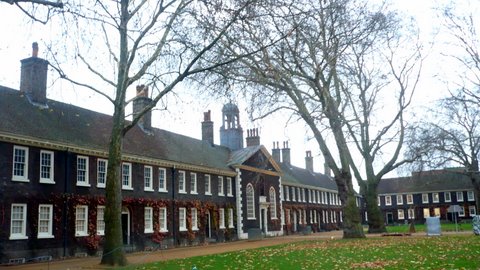
In the second week of Advent, 43 members visited the Geffrye Museum in Shoreditch to enjoy the Christmas Past exhibition. It is the only museum
in the UK to specialise in the furniture and domestic interiors of the urban middle classes – known as the ‘middling sort’ before the
nineteenth century. Set in the former almshouses of the Ironmongers’ Company, built in 1714 to provide homes for the elderly poor, the
eleven period rooms are decorated in authentic festive style at this time of year.
We were welcomed with coffee/tea and warmed mince pies and then were given a fascinating talk, by a member of the Education department,
about the collection and rich and colourful traditions of celebrating Christmas over the past 400 years. I was tempted to sing the Wassail
Carol when she showed a slide of a magnificent Wassail Cup!
Christmas was officially banned by Act of Parliament for sixteen years from 1644 to 1660 as the Puritans thoroughly disapproved of the
insobriety and gluttony. This was reflected in the room decorations and later they were more restrained until celebrations were entirely
transformed in the reign of Queen Victoria and her consort Prince Albert.
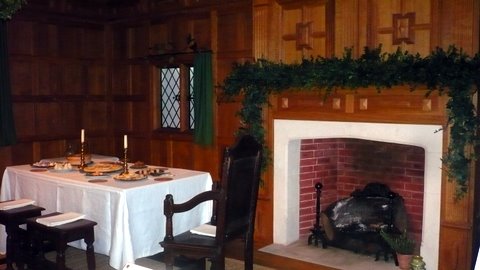
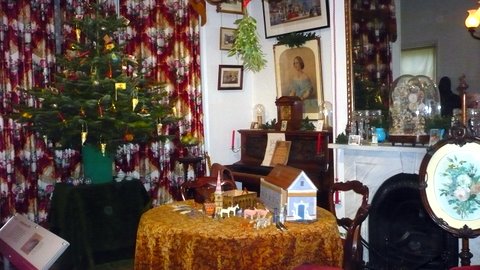
The Christmas Tree was introduced, firstly set on tables in pots with unwrapped presents and later, floor to ceiling with magnificent
decorations. Father Christmas took on his present form during the nineteenth century and we learned that ‘bon bons’ became crackers when
the ‘crack’ was developed by Tom Smith. Alison told us that Victorian children were allowed to play with their Noah’s Ark and its wooden
animals on a Sunday, because of the biblical texts.
After so much information, we felt that we hardly had time to see the displays before lunch, but we made our way through the rooms
admiring the collection. It was busy, with parties of schoolchildren following a trail and drawing pictures of past toys and evergreen
decorations. One of our members took the excellent audio-guide and others commented on the helpful labelling with positive encouragement
to touch some of the exhibits.
After a festive two-course lunch in the restaurant , with mulled wine available, there was time to visit the shop and proceed
to the end of the exhibition. The final rooms took us from 1910, through 1930s, nostalgic 1950s/1960s to a 1998 loft-style
apartment in a block converted from industrial and commercial buildings after the closure of London docks.
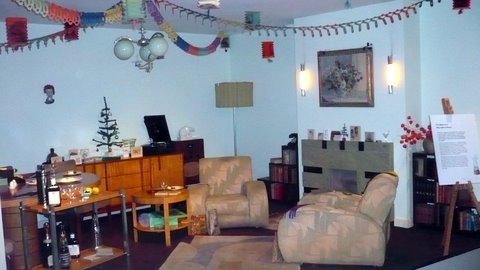
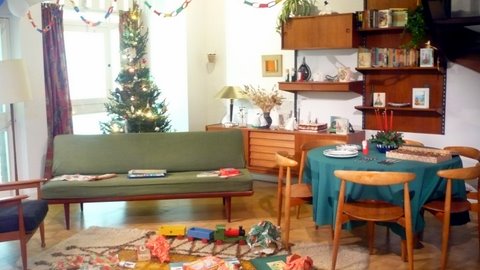
Sadly, garden access was restricted during the winter but we could see some of the award-winning herbal gardens from the peaceful garden room. We walked past the statue of the benefactor Sir Robert Geffrye above the chapel door and admired the lights on the Christmas tree in the grounds, before boarding our coach in the busy high street. As we left, we reflected on this urban oasis and its history.
A return visit to see the gardens in the spring/summer and restored almshouse would be well worthwhile. We wish the Geffrye Museum Trust every success with their bid for funding for a major new development to extend their existing galleries and facilities with a lecture room, library and exhibition space worthy of the considerable educational programmes they undertake.
Maureen Welsh December 2011
